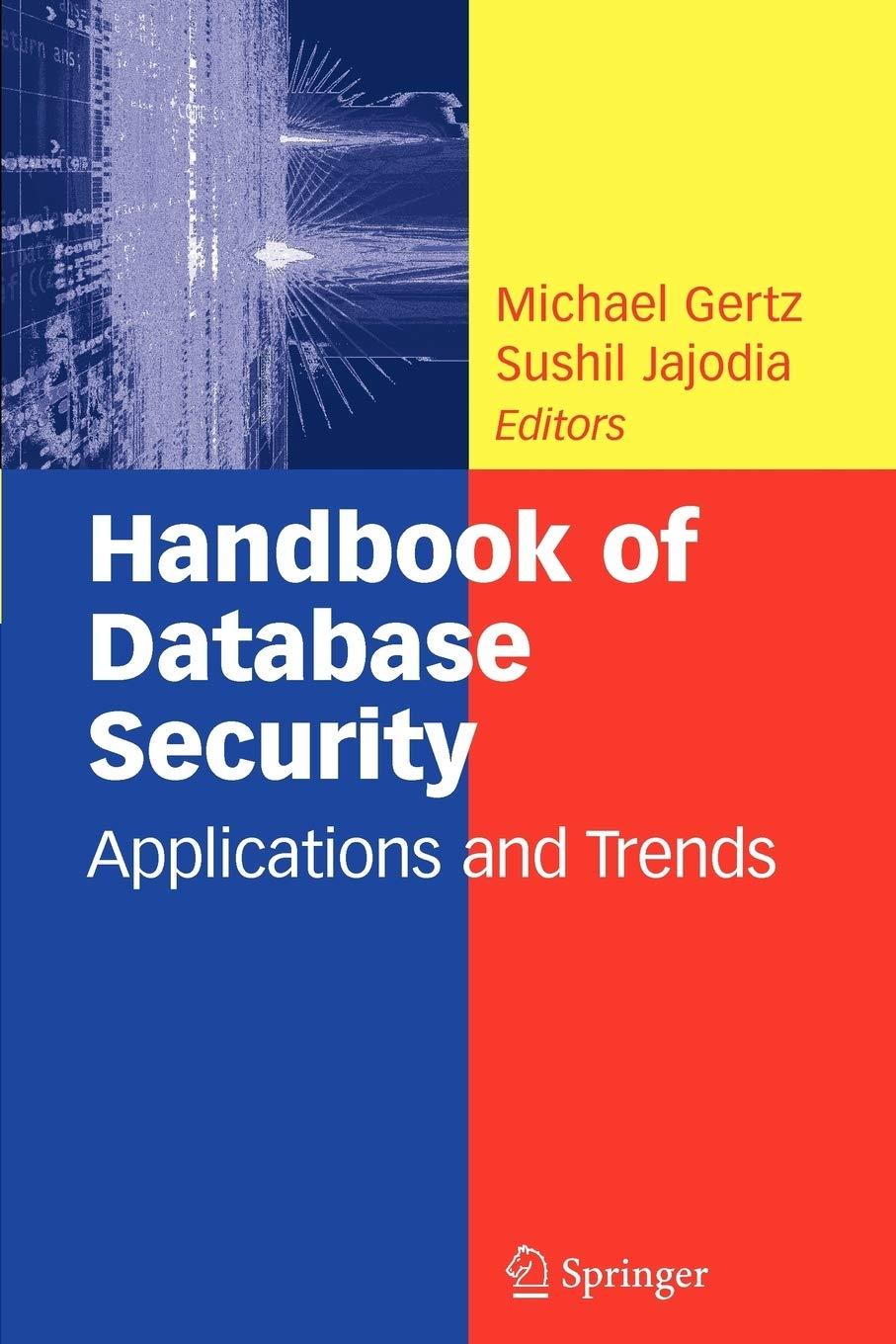Answered step by step
Verified Expert Solution
Question
1 Approved Answer
Your shell will have a loop that reads command lines and process them. The prompt for your shell will be shell _ jr: .
Your shell will have a loop that reads command lines and process them. The prompt for your shell will be "shell
jr:
The commands your shell must handle are:
exit
When the user enters the exit command the shell will stop executing by calling exit
with the exit code
Betore executing exit, the shell will print the message "See you".
goodbye
Has the same functionality as exit.
cd
This command changes the current directory. You can assume the user will always provide a directory as an argument. Assume that a directory name does not include whitespace characters.
pushd
This command is used to change the current directory to the directory given as the command
line argument and simultaneously push the current directory onto a stack of directories. Shell Jr can keep
directories on the stack. If the user try to push more than
print the message "Directory stack is full" and the current directory won't be changed. Assume that a directory name does not include whitespace characters.
dirs
This command will print the directories in the stack.
popd
This command is used to retrieve the directory from the top of the stack and change the current directory to the directory. It will remove top directory from the stack. If the user try to pop a directory when the stack is empty, print the message "Directory stack is empty" and the current directory won't
be changed.
A command with a maximum of one argument
e
g
wc location.txt
That means your shell should be able to handle commands like
date or wc location.txt
Note that these are not shell commands but executable binaries.
Requirements:
You must NOT use an exec
function to implement the functionality associated with the commands exit, goodbye, cd
pushd dirs, and popd. For other commands, you must create a child
via fork
and use execvp
to execute the command.
If the user provides an invalid command, the message "Failed to execute
followed by the command name should be printed. In this case the child will exit returning the error code EX
OSERR. Use printf to display the message and flush the output buffer
e
g
fflush
stdout
Note that the shell is not terminated by executing an invalid command.
You don't need to handle the case where the user just types the enter key. That is
you can assume the user will always provide a command.
Make sure you use printf to print the shell prompt and that you flush the buffer
Your shell should dynamically create memory space for the directory given for the pushd command and free the space when popd is executed. The directory pushed to the stack should be an absolute path. For example, if the current directory is
usr and pushd include is entered,
usr
include will be pushed to the stack.
You must use execvp
and no other exec
system call
Your code must be written in the file shell
jr
c
You may not use dup
read write, nor pipes
not discussed in class.
You must not use system
in order to execute commands.
You can assume a line of input will have a maximum of
characters
Provide a makefile that builds an executable called shell
jr
Name the target that builds the executable shell
jr
Feel free to add any additional targets you need.
All your
programs in this course should be written using the compiler gcc
with the options defined in the gcc
aliases
info.txt file. This file can be found in the info folder of the public grace account.
Common error: If you get the submit server message "Execution error, exit code
execute "make clean
before submitting your code.
Common error: To forget to return the correct value
e
g
in your code.
Your
program representing your shell does not take command line arguments. That is
the main function is: int main
When you see that execvp relies on argv that means it uses an array of strings
argv is not the parameter associated with command line arguments
Just initialize argv with an array of strings and pass it to execvp.
Your shell should exit when end of file is seen. This explains why public tests do not have exit nor goodbye as the last command.
ShellJr exercise relies on Standard I
O
e
g
scanf fprintf, fgets, and so on
NOT UNIX I
O
e
g
write or read function
not yet discussed in class
ShellJr takes a maximum of two arguments
e
g
wc location.txt
You can ignore any other values provided after the second argument. For example
Step by Step Solution
There are 3 Steps involved in it
Step: 1

Get Instant Access to Expert-Tailored Solutions
See step-by-step solutions with expert insights and AI powered tools for academic success
Step: 2

Step: 3

Ace Your Homework with AI
Get the answers you need in no time with our AI-driven, step-by-step assistance
Get Started


